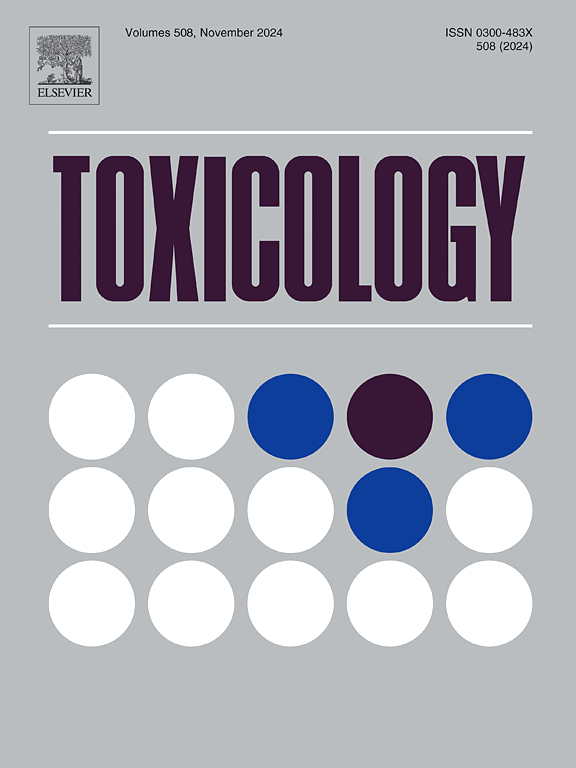Environmentally relevant concentrations of individual per- and polyfluoroalkyl substances (PFAS) and a PFAS mixture impact proliferation, migration, and gene transcription in a human myometrial cell line
IF 4.6
3区 医学
Q1 PHARMACOLOGY & PHARMACY
引用次数: 0
Abstract
Per- and polyfluoroalkyl substances (PFAS) are persistent environmental contaminants linked to adverse health effects. Epidemiological studies have linked PFAS with an increased risk of uterine diseases including fibroids however, the mechanisms involved remain to be elucidated. This study examined the impact of individual PFAS, such as legacy compounds [perfluorooctanoic acid (PFOA), perfluorooctanesulfonic acid (PFOS)] and alternative short-chain compounds [GENX/HFPO-DA and perfluorobutanesulfonic acid (PFBS)], along with a PFAS mixture, on the function and transcriptome of immortalized human myometrial cells (UT-TERT). Exposure to these PFAS resulted in increased cell viability and proliferation. Flow cytometry showed that PFOS and the PFAS mixture altered cell cycle progression, while migration assays indicated significant enhancement of cell migration following PFOS and mixture exposure. Moreover, PFOA, PFBS, and the PFAS mixture impaired gap junction intercellular communication (GJIC), suggesting possible disruptions in cellular communication in the uterine environment. Transcriptomic analysis identified extensive changes in gene expression after exposure to environmentally relevant PFAS levels, revealing common molecular pathways involved in cell signaling, lipid metabolism, and cell survival. These findings provide crucial insights into how PFAS may contribute to reproductive health risks, warranting further investigation into the long-term effects of PFAS on uterine function and overall reproductive health.
环境相关浓度的单个全氟烷基和多氟烷基物质(PFAS)和PFAS混合物影响人类子宫肌瘤细胞系的增殖、迁移和基因转录
全氟烷基和多氟烷基物质(PFAS)是与不利健康影响有关的持久性环境污染物。流行病学研究已将PFAS与子宫疾病(包括肌瘤)风险增加联系起来,但其机制仍有待阐明。本研究考察了单个PFAS,如传统化合物[全氟辛酸(PFOA),全氟辛烷磺酸(PFOS)]和替代短链化合物[GENX/HFPO-DA和全氟丁烷磺酸(PFBS)],以及PFAS混合物,对永生化人子宫肌瘤细胞(UT-TERT)的功能和转录组的影响。暴露于这些PFAS导致细胞活力和增殖增加。流式细胞术显示全氟辛烷磺酸和PFAS混合物改变了细胞周期进程,而迁移实验显示全氟辛烷磺酸和混合物暴露后细胞迁移显著增强。此外,PFOA、PFBS和PFAS混合物破坏了间隙连接细胞间通讯(GJIC),提示子宫环境中细胞通讯可能受到破坏。转录组学分析发现,暴露于与环境相关的PFAS水平后,基因表达发生了广泛的变化,揭示了参与细胞信号传导、脂质代谢和细胞存活的共同分子途径。这些发现为PFAS如何导致生殖健康风险提供了重要见解,值得进一步研究PFAS对子宫功能和整体生殖健康的长期影响。
本文章由计算机程序翻译,如有差异,请以英文原文为准。
求助全文
约1分钟内获得全文
求助全文
来源期刊

Toxicology
医学-毒理学
CiteScore
7.80
自引率
4.40%
发文量
222
审稿时长
23 days
期刊介绍:
Toxicology is an international, peer-reviewed journal that publishes only the highest quality original scientific research and critical reviews describing hypothesis-based investigations into mechanisms of toxicity associated with exposures to xenobiotic chemicals, particularly as it relates to human health. In this respect "mechanisms" is defined on both the macro (e.g. physiological, biological, kinetic, species, sex, etc.) and molecular (genomic, transcriptomic, metabolic, etc.) scale. Emphasis is placed on findings that identify novel hazards and that can be extrapolated to exposures and mechanisms that are relevant to estimating human risk. Toxicology also publishes brief communications, personal commentaries and opinion articles, as well as concise expert reviews on contemporary topics. All research and review articles published in Toxicology are subject to rigorous peer review. Authors are asked to contact the Editor-in-Chief prior to submitting review articles or commentaries for consideration for publication in Toxicology.
 求助内容:
求助内容: 应助结果提醒方式:
应助结果提醒方式:


